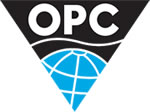Europe / Caspian / CIS
Country profile: Georgia
| Location: | Southwestern Asia, bordering the Black Sea, between Turkey and Russia |
| Climate: | warm and pleasant; Mediterranean-like on Black Sea coast |
| Terrain: | largely mountainous with Great Caucasus Mountains in the north and Lesser Caucasus Mountains in the south; Kolkhet'is Dablobi (Kolkhida Lowland) opens to the Black Sea in the west; Mtkvari River Basin in the east; good soils in river valley flood plains |
| Size: | 69700 sq. km total (Land area: 69700 sq. km ) |
| Population: | 4,630,841 (July 2008 est.) |
| Languages: | Georgian 71% (official), Russian 9%, Armenian 7%, Azeri 6%, other 7% note: Abkhaz is the official language in Abkhazia |
| Government: | republic |
| Capital city: | T'bilisi |
| Legal system: | based on civil law system; accepts compulsory ICJ jurisdiction |
| Currency: | lari (GEL) |
| Licensing: |
Country profile
The Caucasus region sits between the Black Sea on the West and the Caspian Sea on the East, and comprises the newly independent states of Armenia, Azerbaijan, and Georgia. Since 2004, these three countries have been included in the EU’s Neighborhood Policy .
As herein defined, the Caucasus Region consists of two highly dependent net energy importers surrounded by some of the world’s energy giants (i.e. Russia, Iran, and to a smaller but growing extent, Azerbaijan). Energy priorities of the Caucasus countries, therefore, are two-fold: to diversify their energy supplies; and to cash in on transit revenues as their neighbors develop export facilities which traverse their territory. Three of the new export pipelines will pass through Georgia, while none are scheduled to cross Armenia due to its unstable bilateral relationship with Azerbaijan.
The Soviet Union bequeathed a number of problems to the Caucasus countries, including artificially drawn national borders and centrally-planned economies that were heavily dependent on Russia. Even before Azerbaijan and Armenia declared independence, fighting broke out in 1988 between the then-Soviet republics over the disputed area of Nagorno-Karabakh , and separatist conflicts sparked in Georgia soon after independence. Some of the regional conflicts that flared in different parts of the Caucasus throughout the 1990's are now dormant, but few have been officially resolved.Robert Kocharian has been President of Armenia since March 1998 and was re-elected to another term in February 2003, with a run-off in March 2003.
Georgian President Mikhail Saakashvili was elected in January 2004 after the resignation of Eduard Shevardnadze in November 2003. Saakashvili also won a victory in Ajaria, one of three separatist regions in the country, when the leader resigned in May 2004. The central government still holds little power over the other pro-Russian regions of Abkhazia and South Ossetia, and Georgia has amassed 10,000 troops on the border of South Ossetia. Armenia and Georgia are relatively small producers and consumers of energy, however important oil and gas transit routes cross these countries.
Energy production and consumption
| Oil | Gas | |
| Production: | 1,979 bbl/day (2005 est.) | 14 million cu m (2005 est.) |
| Consumption: | 13,400 bbl/day (2005 est.) | 1 billion cu m (2007 est.) |
| Exports: | 2,400 bbl/day (2004 est.) | |
| Imports: | 13,530 bbl/day (2004 est.) | 1 billion cu m (2007 est.) |
| Reserves: | 35 million bbl (1 January 2006 est.) | 8 billion cu m (1 January 2006 est.) |
| Major fields: |
Georgia - recent news
| 08 Dec 25 |
Georgia: Block Energy announces Project III farm-out update AIM-listed Block Energy, the development and production company focused on Georgia, has provided an update on the Project III farm-out process. The Company has received a non-binding farm-in offer from a large energy company following extensive technical and commercial engagement. |
| 06 Nov 25 |
Georgia: Block Energy announces £1.5 million institutional fundraise and operations update Block Energy, the development and production company focused on Georgia, has announced the successful completion of a £1.5 million equity fundraising and an update on operational and asset progress across its portfolio. |
| 24 Sep 25 |
Georgia: Block Energy announces interim results for the six months ended 30 June 2025 Block Energy, the development and production company focused on Georgia, has announced the interim results for Block Energy and its subsidiaries for the six months ended 30 June 2025. |
| 04 Sep 25 |
Georgia: Block Energy announces farmout of licence XIQ (part of Project IV) Block Energy, the development and production company focused on Georgia, has announced the conclusion of negotiations for the farmout of licence XIQ (forming part of Project IV) to a leading international E&P company. |
| 26 Aug 25 |
Georgia: Block Energy completes Carbon Capture Storage CO2 pilot injection Block Energy, the development and production company focused on Georgia, has completed its initial injection of CO2 as part of the Carbon Capture Storage ('CCS') project. |
Georgia - more news
Other countries in this region
- Afghanistan,
- Albania,
- Armenia,
- Austria,
- Azerbaijan,
- Belarus,
- Belgium,
- Bosnia and Herzegovina,
- Bulgaria,
- Croatia,
- Cyprus,
- Czech Republic,
- Denmark,
- Estonia,
- Faroe Islands,
- Finland,
- France,
- Germany,
- Greece,
- Greenland,
- Hungary,
- Iceland,
- Ireland,
- Italy,
- Kazakhstan,
- Kyrgyzstan,
- Latvia,
- Lithuania,
- Luxembourg,
- Malta,
- Moldova,
- Montenegro,
- Netherlands,
- Norway,
- Poland,
- Portugal,
- Romania,
- Russia,
- Serbia,
- Slovakia,
- Slovenia,
- Spain,
- Sweden,
- Switzerland,
- Tajikistan,
- Tatarstan,
- Turkey,
- Turkmenistan,
- Ukraine,
- United Kingdom,
- Uzbekistan











